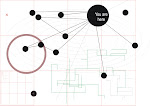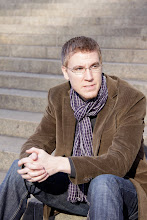
Topos and Chora
“The Pyla-Koutsopetria Archaeological Project (PKAP) has investigated the 2 sq. km coastal zone of Pyla Village in Cyprus since 2003. The project is a transdisciplinary, landscape-oriented investigation that has drawn upon an international team of archaeologists, historians, geologists, illustrators, and other specialists to produce a vivid, diachronic, archaeological history of a significant coastal site.”
“Since its inception, photography has played a key role in archaeological research. Tendencies to view the camera's eye uncritically as an objective representation of material reality have gradually given way to more sophisticated understandings of the camera's role in producing the kind of illusive objectivity that formed a compelling foundation for archaeological knowledge. While photographs of artifacts, architecture, and even topography will continue to appear as evidence for archaeological arguments, there has been less attention to work of photographers in creating the same kind of dynamic, discursive landscapes that archaeological knowledge imagines. By incorporating an experienced landscape photographer into a landscape archaeological project, we seek to problematize in an explicit way the role of photography in the creation of archaeological knowledge.” From the PKAP A-I-R Invitation
Ancient conceptions of place varied widely between Aristotle’s preference for topos and Plato’s emphasis on chora. Aristotle’s topos suggests objective point on a map that exerts no actual influence upon those who enter. Whereas Plato’s preference for chora, which draws upon the etymological root of “choreography,” as the reciprocal dance between humanity and environment. While topographic mapping and Global Position systems are remarkably helpful to research and convenient for day-to-day living, it is through continued presence and interaction in the landscape that allows the intimacy of chora to emerge from the plotted points and coordinates. While archaeological work relies upon topos, it cultivates chora.
My work for the PKAP residency functions on several levels: documentary, landscape, and archive of topos and chora. By drawing upon both ancient conceptions of place, I was keenly aware of our contemporary presence in the landscape as researchers. This reflexive stance guided my efforts to document this emerging diachronic perspective of the historical landscape. As human presence transforms topos to chora it becomes archaeological evidence. Similarly, the photographic project provides a document of ongoing human presence and an archive of evidence of the 2009 PKAP field season and this Mediterranean landscape.








